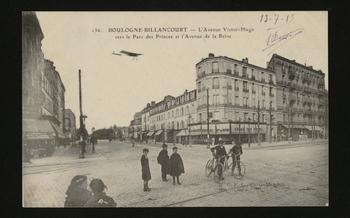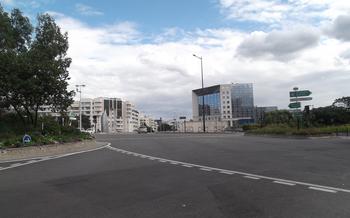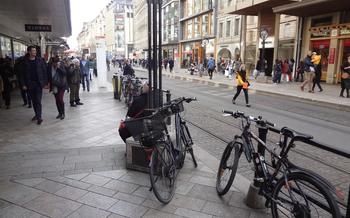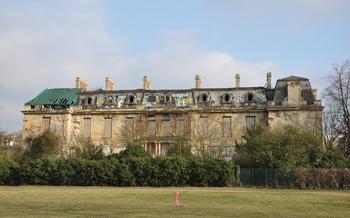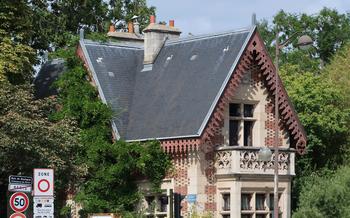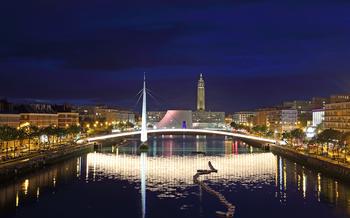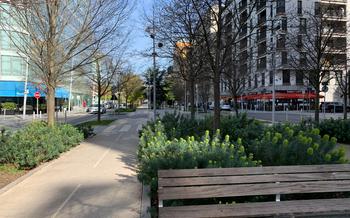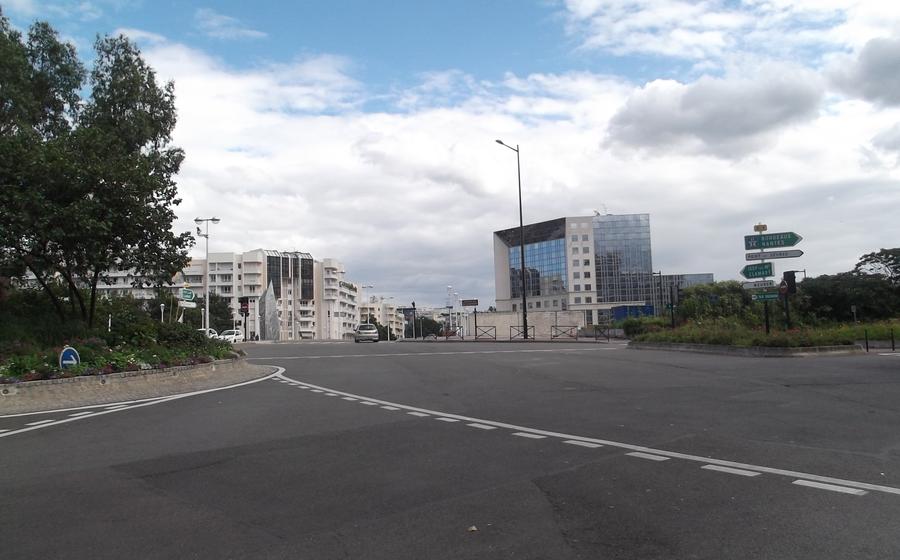
Roland Garros Stadium
- Roland Garros Stadium: An Overview
- Visiting Roland Garros
- Exploring the Grounds
- French Open Experience
- Tickets and Seating Options
- Food and Beverages
- Shopping and Souvenirs
- Family-Friendly Activities
- Transportation and Parking
- Accommodation Options
- Local Attractions
- Roland Garros History
- Tennis Culture in France: A Legacy of Passion and Excellence
- Roland Garros Fashion
- Insider Tip
Roland Garros Stadium: An Overview
Nestled in the vibrant city of Boulogne-Billancourt, Roland Garros Stadium stands as a symbol of tennis excellence and the spirit of the French Open. Named after the legendary French aviator Roland Garros, the stadium has a rich history dating back to 1891, when it was initially built as a velodrome for cycling races. However, in 1928, the French Tennis Federation transformed the venue into a tennis stadium, hosting the inaugural French Open the following year.
Over the decades, Roland Garros has undergone several expansions and renovations, evolving into one of the most prestigious tennis venues in the world. The stadium boasts a seating capacity of over 34,000 spectators, with its iconic Philippe Chatrier Court, the center court, accommodating nearly 15,000 fans. Suzanne Lenglen Court, the second-largest court, offers a capacity of over 10,000.
Roland Garros is renowned for hosting the French Open, one of the four Grand Slam tournaments in tennis. Held annually since 1891, the French Open is the only Grand Slam played on clay courts, making it a unique and challenging test for players. The tournament attracts the world's top tennis stars, who compete for the coveted Coupe des Mousquetaires, the French Open trophy.
Visiting Roland Garros
Best Time to Visit: The most captivating time to visit Roland Garros is during the French Open, held annually in late May and early June. The tournament buzzes with excitement, world-class tennis, and an electric atmosphere. If you prefer a quieter experience, plan your visit during the off-season when you can wander the grounds, admire the architecture, and soak in the history without the crowds.
Guided Tours and Ticket Prices: Immerse yourself in the rich history of Roland Garros with a guided tour. Tours are conducted in French and English and offer insider insights into the stadium's past, present, and future. Ticket prices vary depending on the type of tour and the time of year, but typically range from €15 to €2
Dress Code and Etiquette: Roland Garros upholds a smart casual dress code. While there are no strict requirements, it's customary to dress respectfully, avoiding overly casual or revealing attire. Additionally, be mindful of noise levels and refrain from disruptive behavior during matches to ensure a pleasant experience for all attendees.
Wheelchair Accessibility: Roland Garros is committed to ensuring accessibility for all visitors. Wheelchair-accessible seating is available in various sections of the stadium, and ramps and elevators provide easy movement throughout the grounds. Visitors with disabilities can also take advantage of dedicated parking spaces and accessible restrooms.
Exploring the Grounds
Roland Garros boasts a sprawling complex of courts, gardens, and facilities, each with its unique charm and significance.
The Philippe Chatrier Court, the stadium's centerpiece, commands attention with its imposing presence. This magnificent court, with a seating capacity of over 15,000, is the stage for the French Open finals and other marquee matches. Its retractable roof ensures uninterrupted play, even in inclement weather, while its state-of-the-art facilities provide an unparalleled viewing experience.
The Suzanne Lenglen Court, named after the legendary French tennis player, is the second-largest court at Roland Garros. With a capacity of over 10,000 spectators, it hosts some of the tournament's most exciting matches. Known for its intimate atmosphere and proximity to the action, the Suzanne Lenglen Court offers a thrilling experience for tennis enthusiasts.
Beyond these two main courts, Roland Garros features a variety of other courts, including the Simonne Mathieu Court and several smaller practice courts. These courts provide opportunities for up-and-coming players to showcase their skills and for fans to catch a glimpse of the future stars of tennis.
Amidst the courts, visitors can wander through the tranquil gardens of Roland Garros, which offer a serene escape from the tournament's intensity. Sculptures and artworks dot the landscape, adding a touch of elegance and creativity to the surroundings. These gardens provide a peaceful retreat where visitors can relax, stroll, and admire the beauty of the stadium grounds.
French Open Experience
Roland Garros Museum:
Immerse yourself in the rich history of Roland Garros and the French Open at the on-site museum. Delve into the evolution of the tournament, from its humble beginnings to its current status as one of the most prestigious events in tennis. Explore interactive exhibits, historical artifacts, and captivating stories that bring the legacy of the French Open to life.
French Open Trophies:
Witness the history of the French Open up close as you admire the impressive collection of trophies on display. Gaze upon the iconic Coupe des Mousquetaires, awarded to the men's singles champion, and its counterpart, the Coupe Suzanne Lenglen, presented to the women's singles winner. Learn about the legendary players who have etched their names on these prestigious trophies and relive the unforgettable moments that have shaped the history of the tournament.
Interactive Exhibits and Virtual Reality Experiences:
Engage with the world of tennis like never before through interactive exhibits and immersive virtual reality experiences. Step into the shoes of a professional player, test your skills on a virtual tennis court, and experience the thrill of competing in a Grand Slam tournament. These interactive elements offer a unique and unforgettable way to connect with the sport and create lasting memories.
Live Matches and Match Schedules:
Witness the magic of the French Open unfold before your eyes as you catch live matches on the stadium's various courts. Soak in the atmosphere, cheer on your favorite players, and experience the excitement of the tournament firsthand. Check the match schedules in advance to plan your visit and ensure you don't miss any of the captivating action.
Tickets and Seating Options
Ticket Categories and Prices:
Roland Garros offers various ticket categories to cater to different preferences and budgets. General admission tickets provide access to the outer courts, while reserved seating tickets allow spectators to choose specific seats in the Philippe Chatrier or Suzanne Lenglen courts. Prices vary depending on the match, day, and court.
Advance Booking and Online Sales:
To secure your spot, it's advisable to book tickets in advance. Online sales typically open a few months before the tournament. Keep an eye on the Roland Garros website for ticket release dates and availability.
Seating Options and View from Different Sections:
The Philippe Chatrier Court offers the most premium seating experience, with comfortable seats and an unparalleled view of the action. The Suzanne Lenglen Court provides a more intimate atmosphere with excellent sightlines from most sections. Other courts offer a unique perspective, allowing fans to get up close and personal with the players.
Upgrading Seats and Hospitality Packages:
For an elevated experience, consider upgrading to VIP or hospitality packages. These packages offer exclusive access to premium seating areas, private lounges, and a range of hospitality services, including gourmet catering and beverage packages.
Food and Beverages
A Culinary Adventure at Roland Garros:
Indulge your taste buds with a culinary journey at Roland Garros, where food and beverages are elevated to an art form. From traditional French cuisine to international delights, the stadium offers a diverse range of dining options to satisfy every palate.
French Cuisine and Local Delicacies:
Savor the flavors of France with an array of mouthwatering dishes that showcase the country's rich culinary heritage. From classic baguettes and artisanal cheeses to gourmet pastries and crêpes, there's something for every gourmand. Don't miss the chance to sample local specialties like escargots, coq au vin, and the iconic steak frites.
Restaurants, Cafes, and Food Stalls:
The stadium features a variety of restaurants and cafes offering both indoor and outdoor seating. Whether you prefer a leisurely meal or a quick bite between matches, there are options to suit every need. From fine dining experiences to casual cafes and food stalls, you'll find everything from gourmet burgers to fresh salads and delectable desserts.
Picnics and Outside Food Policies:
For a more relaxed dining experience, consider packing a picnic and enjoying it in one of the designated picnic areas within the stadium grounds. Please note that outside food and beverages are not permitted inside the main courts, but you can bring your own snacks and drinks to enjoy in the picnic areas.
Local Favorites and Hidden Gems:
Discover the hidden culinary gems of Roland Garros by venturing beyond the stadium's main dining areas. Explore the surrounding neighborhoods of Boulogne-Billancourt and Auteuil, where you'll find a plethora of charming cafes, bistros, and restaurants frequented by locals. Ask for recommendations from stadium staff or fellow tennis enthusiasts to uncover the best-kept secrets of the area.
Shopping and Souvenirs
A Tennis Fan's Paradise: Embrace the Roland Garros experience by taking home a piece of the tournament with official Roland Garros merchandise. The stadium boasts a variety of shops and boutiques offering an array of tennis-themed gifts and memorabilia. Whether you're looking for souvenirs for yourself or gifts for loved ones, you'll find a treasure trove of options to choose from.
Tennis Attire and Accessories: Step up your tennis game with stylish apparel and accessories inspired by the world's top players. From performance-enhancing tennis shirts and shorts to trendy caps and visors, you'll find everything you need to elevate your on-court style.
Books, Magazines, and DVDs: Delve deeper into the world of tennis with an extensive collection of books, magazines, and DVDs. Discover the rich history of the sport, relive iconic matches, and gain insights from legendary players and coaches. These publications offer a wealth of knowledge and entertainment for tennis enthusiasts of all levels.
Art Prints and Posters: Capture the essence of Roland Garros with stunning art prints and posters that showcase the tournament's iconic moments and players. These vibrant artworks are perfect for decorating your home, office, or tennis club, adding a touch of elegance and inspiration to your space.
Family-Friendly Activities
Roland Garros offers a range of family-friendly activities to ensure a memorable experience for visitors of all ages. Kids' Day, held during the French Open, is a dedicated day filled with fun activities, junior tournaments, and entertainment for children. Playgrounds and entertainment areas scattered throughout the grounds provide opportunities for kids to run, play, and make new friends while parents enjoy the matches. Face painting, games, and interactive activities add to the festive atmosphere, creating lasting memories for the entire family. Family-friendly guided tours are also available, offering a unique perspective on the history and significance of Roland Garros, tailored to engage and educate younger visitors.
Transportation and Parking
Getting to Roland Garros Stadium:
-
Public Transportation: Roland Garros Stadium is conveniently accessible by public transportation. The closest metro station is Porte d'Auteuil (line 10), just a short walk from the stadium. Alternatively, the RER C line stops at the Issy or Boulogne-Jean-Jaurès stations, both within walking distance. Numerous bus lines also serve the area, including lines 22, 52, 72, and PC
-
Parking: For those driving, there are several parking options near the stadium. The Stade Roland Garros car park offers paid parking spaces. Additionally, street parking is available in the surrounding neighborhoods, although it can be limited during match days.
-
Ride-sharing Services and Taxis: Ride-sharing services like Uber and taxis are readily available in Paris and can be a convenient option for reaching the stadium. Simply request a ride through the app or hail a taxi on the street.
Accommodation Options
Finding a place to stay near Roland Garros Stadium is crucial for a comfortable and convenient visit. Whether you prefer hotels, apartments, or bed and breakfasts, there are plenty of options to choose from.
- Nearby Hotels:
- There are several hotels within walking distance of the stadium, offering a range of options from budget-friendly to luxurious.
-
Consider hotels like the Hotel Villa Escudier or the Courtyard by Marriott Paris Boulogne for a convenient stay.
-
Apartments and Short-Term Rentals:
- For a more spacious and independent stay, consider renting an apartment or a vacation home near the stadium.
-
Platforms like Airbnb and Booking.com offer a wide selection of options to suit different budgets and group sizes.
-
Tips for Finding Affordable Accommodation:
- Book your accommodation well in advance, especially if visiting during the French Open.
- Consider staying in neighboring towns like Issy-les-Moulineaux or Vanves for more affordable options.
-
Look for discounts and special offers, such as weekend rates or packages that include match tickets.
-
Hotel Packages and Special Offers:
- Some hotels offer packages that include match tickets, transportation, and other perks, which can be a cost-effective option.
- Check the Roland Garros website or contact hotels directly for information on available packages.
Local Attractions
Beyond Roland Garros, Boulogne-Billancourt offers a wealth of attractions to explore. Stroll along the Seine River and admire the picturesque views, or embark on a scenic boat tour for a unique perspective of the city. Shop for souvenirs and local delicacies at the many charming boutiques and markets, or indulge in a culinary adventure at one of the city's many restaurants. For sports enthusiasts, the Parc des Princes, home to the legendary Paris Saint-Germain football club, is just a stone's throw away. Take a guided tour of the stadium, catch a thrilling match, or simply soak up the electrifying atmosphere. Whether you're seeking cultural experiences, outdoor adventures, or sporting excitement, Boulogne-Billancourt has something to offer every visitor.
Roland Garros History
The history of Roland Garros Stadium is intricately intertwined with the birth and evolution of the French Open, the second Grand Slam tournament of the year. In 1891, the French Tennis Federation (FFT) was founded, and the following year, the first French Open was held at the Stade Français in Paris. The tournament quickly gained popularity, and in 1925, the FFT decided to build a dedicated stadium for the event.
The new stadium was named after Roland Garros, a French aviator and war hero who was also a passionate tennis player. Garros had won the French Open in 1920 and was tragically killed in World War I just a few months later. The stadium was inaugurated in 1928 and has hosted the French Open every year since, except during World War II.
Over the years, Roland Garros Stadium has undergone several renovations and expansions to accommodate the growing number of spectators and players. The most significant change came in 1997 when the Philippe Chatrier Court, the stadium's center court, was rebuilt with a retractable roof. This allowed the tournament to be played in any weather condition, ensuring that rain delays would no longer disrupt the matches.
Roland Garros Stadium has witnessed some of the most memorable matches and iconic moments in tennis history. Björn Borg's five consecutive French Open titles in the 1970s, Chris Evert's seven championships in the 1970s and 1980s, and Rafael Nadal's record 13 titles in the 21st century are just a few of the many highlights that have taken place on the stadium's hallowed clay courts.
The French Open champions and their legacies are celebrated at the Roland Garros Museum, located within the stadium grounds. The museum houses a collection of trophies, memorabilia, and interactive exhibits that tell the story of the tournament and its greatest players. Visitors can learn about the history of the sport, watch highlights from past matches, and even try their hand at playing tennis on a virtual court.
Tennis Culture in France: A Legacy of Passion and Excellence
In the realm of sports, France holds a profound affinity for tennis, a passion that has been cultivated for centuries. The French Open, hosted at Roland Garros, stands as a testament to this deep-rooted love for the game. This prestigious tournament has played a pivotal role in shaping the landscape of tennis in France, leaving an indelible mark on the sport's history and culture.
The French Open, first held in 1891, has become an integral part of the French sporting calendar, attracting millions of spectators each year. The tournament's unique clay courts, a surface that demands both finesse and endurance, have earned it the reputation of being one of the most challenging and prestigious events in the world of tennis.
The French Open has been instrumental in nurturing and developing French tennis talent. Over the years, the tournament has witnessed the rise of legendary French players such as Suzanne Lenglen, René Lacoste, Henri Cochet, and Yannick Noah, all of whom have left an indelible mark on the sport. Their achievements have inspired generations of young French players to pursue their dreams on the court, contributing to the country's rich tennis heritage.
To foster the growth and development of tennis in France, numerous tennis academies and training centers have been established across the country. These academies provide aspiring young players with world-class coaching, facilities, and training programs, enabling them to hone their skills and achieve their full potential. The French Tennis Federation (FFT) also plays a crucial role in promoting the sport at the grassroots level, organizing tournaments, competitions, and coaching programs to encourage participation and identify talented individuals.
The passion for tennis in France extends beyond the professional realm. The sport has become deeply ingrained in the country's culture, with many French people enjoying recreational tennis as a leisure activity. Public parks and tennis clubs are scattered throughout the country, providing opportunities for people of all ages and skill levels to engage in the game.
The French Open's impact on the sport in France has been profound. It has not only produced legendary players and inspired countless young athletes but has also solidified the country's position as a leading force in the world of tennis. The tournament's legacy continues to grow, attracting fans and players from around the globe who come to witness the magic and excitement of this iconic event.
Roland Garros Fashion
Roland Garros is not just about tennis; it's also a fashion show. The tournament has a long history of iconic outfits and players who have made a statement with their wardrobe choices. From René Lacoste's classic polo shirt to the colorful and daring styles of the 1980s, Roland Garros has seen it all.
In recent years, the tournament has become even more fashion-forward, with players pushing the boundaries of what is considered appropriate tennis attire. Serena Williams has been known to wear everything from catsuits to tutus, while Maria Sharapova has opted for sleek and sexy dresses.
Off the court, the Roland Garros Village is a hotbed of fashion activity. Here, visitors can shop for the latest tennis apparel and accessories from all the major brands. They can also get their hands on exclusive Roland Garros merchandise, such as t-shirts, hats, and bags.
If you're a fashion lover, Roland Garros is the place to be. With its mix of classic and contemporary styles, there's something for everyone.
Insider Tip
Beyond the grandstands and courts, Roland Garros holds hidden gems and secret spots that offer a unique perspective of the stadium and its surroundings. One such spot is the rooftop terrace of the Philippe Chatrier Court, which provides a breathtaking panoramic view of the entire complex. The terrace is usually closed to the public, but guided tours occasionally offer access to this exclusive vantage point.
Another hidden gem is the Musée de la FFT, located within the stadium grounds. This museum showcases the rich history of French tennis, featuring exhibits on legendary players, memorable matches, and the evolution of the sport in France. Admission is free, and visitors can explore the museum's collection at their own pace.
For a taste of local flavor, venture beyond the stadium to explore the charming neighborhood of Boulogne-Billancourt. This vibrant area is home to a variety of restaurants, cafes, and shops, including several frequented by tennis players and fans. Rue d'Aguesseau, in particular, is known for its lively atmosphere and its concentration of tennis-themed establishments.
If you're visiting Roland Garros during the off-season, don't miss the opportunity to participate in one of the many events and activities that take place throughout the year. These events range from tennis tournaments and exhibitions to cultural performances and art shows. Check the Roland Garros website for a calendar of upcoming events.

